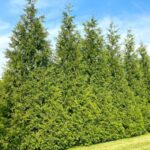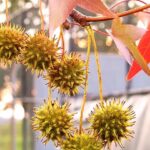Reasonable Price
We offer reasonable price
$60.99 Original price was: $60.99.$35.99Current price is: $35.99.
The 2 Paw Paw Tree Bare-root (Asimina Triloba) is a native fruit tree. Ideal for shaded gardens and orchards, yielding delicious, custard-like fruit. Native to North America!
Apr 27
May 02 - May 04
May 07 - May 11
We offer reasonable price

Contact us 24 hrs a day

You've 30 days to Return

100% secure payment
| Product |  |  |  |  |  |
|---|---|---|---|---|---|
| Name | Ginkgo Biloba Tree Bare Roots – 12 to 18 Inch – Hardy Maidenhair Tree | 2 Pawpaw Tree Hardy Paw Paw Tree Seedlings 12 to 18 Inch Tall Bare Root | 2 Pawpaw Tree Seedlings – 18-24 Inch Bare Root – Hardy Fruit Tree | Thuja Green Giant Arborvitae – 2.5 Inch Pot – Fast-Growing Evergreen | Sweet Gum Tree Quart Pot – 2ft Tall – Fast Growing Ornamental |
| USDA Hardiness Zone | - | - | - | - | - |
| Soil Type | - | - | - | - | - |
| Sunlight Exposure | - | - | - | - | - |
| Expected Planting Period | - | - | - | - | - |
The 2 Paw Paw Tree Bare-root (Asimina Triloba) is a remarkable native fruit tree, celebrated for producing the largest fruit indigenous to North America. This deciduous tree is an excellent choice for enhancing landscaping and establishing home orchards. The paw paw fruit, famous for its unique, custard-like flavor, offers a tropical taste experience, often likened to a blend of banana and mango. Add a touch of exotic flavor to your garden with this easy-to-grow native tree.
Typically reaching up to 25 feet in height, the pawpaw tree thrives in shaded and sheltered environments, often growing between 2 to 12 feet tall within established forests. Its dark green, lustrous leaves, which can grow up to 12 inches long, are a striking feature. These leaves transform into a beautiful yellow hue in late fall, adding a splash of seasonal color to your landscape. Enjoy the beauty of this native tree throughout the year.
Paw paw trees are self-pollinating, simplifying their cultivation in various settings. The fruit ripens in the fall, offering a delectable treat. However, it’s important to note that the skin and seeds are not edible due to the presence of annonacin, which can be harmful. This native fruit tree adapts well to well-drained soils and tolerates a range of conditions, making it a valuable addition to any garden. The pawpaw tree is a low-maintenance addition to your landscape and orchard.
Q1: How tall does the Paw Paw tree grow?
A1: The Paw Paw tree can grow up to 25 feet in ideal conditions. However, in shaded areas, it typically stays between 2 to 12 feet tall.
Q2: What does Paw Paw fruit taste like?
A2: The pawpaw fruit has a custard-like texture and a flavor that is often described as a cross between a banana and a mango, though some compare it to a raw potato in taste.
Q3: Can I eat the skin or seeds of the Paw Paw fruit?
A3: No, the skin and seeds of the pawpaw fruit are toxic and should not be eaten. Only the flesh is edible.
Q4: Is the Paw Paw tree self-pollinating?
A4: Yes, the Paw Paw tree (Asimina Triloba) is self-pollinating, meaning it does not require a second tree for fruit production, although planting multiple trees can increase yield.
Q5: Where should I plant a Paw Paw tree?
A5: The Paw Paw tree thrives in shaded or partially shaded areas with well-drained soil. It is perfect for gardens or home orchards, especially in regions with mild climates.
Q6: What is the best time of year to plant my Paw Paw tree?
A6: The best time to plant your bare-root Paw Paw tree is in the spring or fall, when the weather is mild and the tree can establish its roots before the extreme temperatures of summer or winter.
Q7: How much sunlight does a Paw Paw tree need to produce fruit?
A7: While Paw Paw trees thrive in shaded or partially shaded areas, they still need some sunlight to produce fruit. Aim for at least 4-6 hours of indirect sunlight per day for optimal fruit production.
Q8: What kind of soil is best for Paw Paw trees?
A8: Paw Paw trees prefer well-drained, slightly acidic soil. Amending your soil with compost or other organic matter can improve drainage and provide essential nutrients for healthy growth.
Q9: How long does it take for a Paw Paw tree to produce fruit?
A9: It typically takes 5-7 years for a Paw Paw tree to begin producing fruit. Be patient, as the delicious and unique fruit is well worth the wait!
Q10: How far apart should I plant multiple Paw Paw trees?
A10: If you are planting multiple Paw Paw trees, space them about 8-10 feet apart to allow for adequate growth and air circulation.
USDA Hardiness Zone
Soil Type
Sunlight Exposure
Expected Planting Period
Sold 80 products
Sold 50 products
Sold 52 products
Fruit Trees
Sold 85 products
Fruit Trees
Sold 64 products
Fruit Seeds
Sold 80 products
Sold 75 products
Edible Landscaping
Paw Paw Indian Banana Tree – Quart Pot – Cold-Hardy Fruit Tree
Sold 98 products
Sold 66 products
Sold 75 products
Sold 84 products
Sold 68 products
Sold 50 products

Reviews
There are no reviews yet.